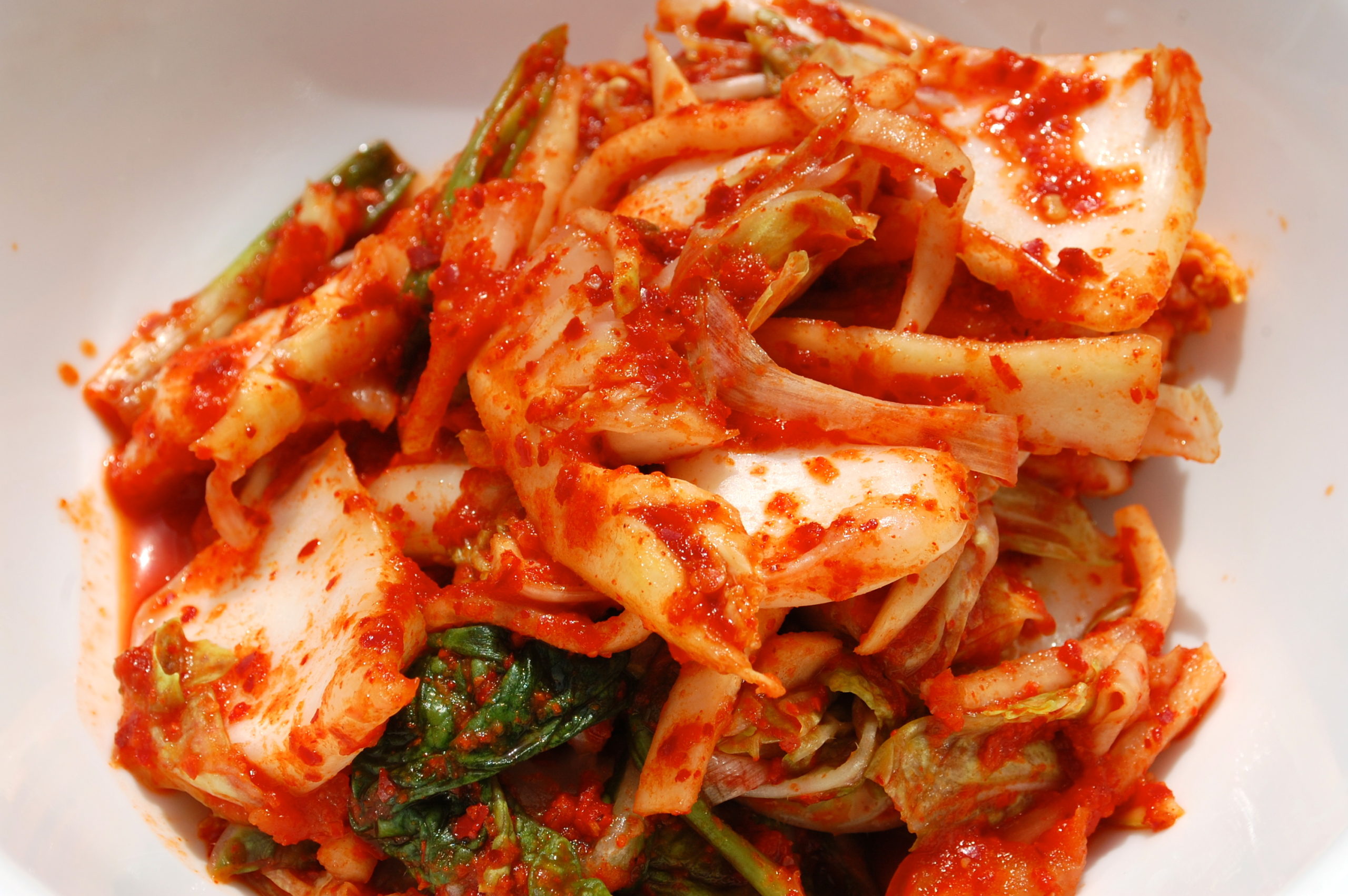
Kimchi Day – 22nd November
KIMCHI DAY – 22nd November
The whole world knows about Korea through the “Kimchi” – not the meat, fish or delicacy, it’s a kind of mixed pickles with chili powder and spices. Have you ever wondered what makes Kimchi so charming, the food of Korea, the food of national essence yet? There’s a saying “김치 보면서 자기도 모르게 군침 흐르고 있다면 당신은 바로 한국사람이다” (If only looking at a dish of Kimchi makes you swallow your saliva, you’re totally Korean).
For Koreans, Kimchi is a popular dish but somehow “strange” because the attractiveness of Kimchi comes from changing flavors, colors and seasoning … there is a wide range of different Kimchi dishes depending on localities and skills of the cook. The Kimchi Association of Korea has chosen the date November 22nd as “Kimchi Day”. This choice is not random but is based on an authentic scientific research that if you salt Kimchi on November 22nd, the featured tonic of Kimchi will reach the highest point.
Humans have evolved over many stages of civilizations, but no civilization can lack of the most basic thing – food. “Fine words butter no parsnips” “what to eat” itself has become an essential needs of human beings, has become one of the main driving forces for the development of our cultures and society. The number of nations around the world is equivalent to the number of culinary cultures coexisting and developing diversely. It’s not wrong to say that: geographical situation and climate change over the periods have become indispensable factors that constitute the differences of culinary cultures particularly and socio – culture say generally.
Just like Vietnam, South Korea’s territory stretches along South – North. With its geographical location and the distinction of the four seasons (Spring – Summer – Autumn – Winter), the culinary cultures of the two South Korea and North Korea also demonstrate interesting differences. The North Korea has the cold dry climate and low temperatures so that coniferous vegetation is more likely to thrive, gardening agriculture is preferred to farming agriculture and main agricultural product is buckwheat rather than rice in South Korea. Staple food of North Korea are grains, corn, sweet potato and potato. North Korean cooking style is to mix rice and grains together. In contrast, in hot regions – such as the subtropical South Korea, due to the hot and humid climate, high temperatures make food easily spoiled or fermenting so people there are routinely mix and soak raw food with salt to preserve it for a long time, thus it forms the culture of “salted food.”
We can clearly see the difference on the methods of salting and preserving Kimchi among various regions in Korea. Northerners often put less salt and spices into the frugal dish, so that the freshness of the vegetables is specially retained. Conversely, southerners flavor food with a lot of salt and 젓국 (fish sauce made from shrimp, oysters, fish, eggs and other seafood), so the Southern Kimchi emits less water and the taste is much more moreish.
As the weather starts to get colder, Korean housewives also start to make Kimchi. For a delicious Kimchi jar, it’s very critical to pay attention to the climate factors. Salted Kimchi is usually maintained at the lowest temperature below 0 ° C to the average temperature of 4 ° C. With the storage temperature between 3 ~ 5 ° C, the Kimchi will start fermenting after 2 ~ 3 weeks.
Although Kimchi has long become a common food that you can buy anywhere, in supermarkets and convenience stores, but the best Kimchi is the one with “손맛” (flavor of hands ) of the women. The older Koreans expressed compassion about young women in modern society showing “indifference” and almost “extinct” consciousness on salting Kimchi skill.
Koreans eat Kimchi not only because of the acidity andspice as an effective “medicine” against “sick” or for appetite stimulation but also because they are well aware of the beneficial effects of this healthy foods. In the process of preserving Kimchi, organic acids produced by the development of a variety of microbial fermentation stimulate and create special scent of Kimchi. When Kimchi becomes “ripe”, its lactic acid helps produce components which are useful not only for weight loss but also cancer prevention, reduce cholesterol level in the body.
The demand for Korean Kimchi is beyond the supply capability of domestic producers so that South Korea must annually import Kimchi from China to satisfy the needs of the domestic market. Chinese Kimchi has more chili powder and is not really good-tasting and naturally sweet like Korean Kimchi. On cold days, there’s nothing more wonderful than tasting “김치 찌개” (Kimchi soup) or “김치 찜” (kimchee stew with meat, pork chops or mackerel).




Wow, it is very very powerful of good food.